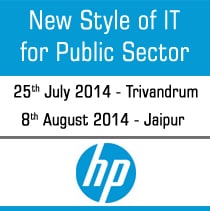|
Cloud, Mobility, Big Data and Security are driving major shift. The explosion of data that the world is creating and the challenges involved in managing, storing, processing and exploiting it. On any given day, the world posts one billion pieces of content to Facebook, generates over 200 million tweets, and creates information using cameras, sensors, GPS enabled devices, and transaction systems. For example, Wal-Mart alone processes over a million transactions every hour – and this translates to more than 2.5 exabytes of new data daily.
Thinking about the data center alone, the path we are on is not sustainable in terms of space, energy and cost. For instance, large cloud and web services will conservatively have an installed base of 8-10 million servers in the next three years. The space that these servers will occupy will be the equivalent of 200 football fields. If laid end to end, these data centers would span the length of Manhattan. And to build these data centers will cost anywhere between $10- $20 billion dollars.
From a public sector perspective, State, local, and provincial governments’ ability to provide services to constituents is being challenged by budgetary pressures, regulatory guidelines, aging demographics, and heightened concerns over security and privacy. These issues are the driving forces complicating the decisions of today’s government officials. Need is to understand the many citizen and business touch points of state, local and provincial governments and also understand the need to enhance ability to make informed business decisions and mitigate risks by leveraging proven and comprehensive technology solutions.
In the recent two decades, we have witnessed an extensive use of Information and Communication Technologies (ICTs) by national and local governments worldwide to enhance the efficiency of governments and bring them closer to citizens’ demands. Evidence from numerous projects and initiatives worldwide shows that, well used, ICTs offer new possibilities for improved governance efficiency, new ways of citizens’ engagement and their more active participation in policy-making, resulting in re-building of trust and transformation of relations between governments and their citizens
To be involved in defining the future of democracy, governance and public work at the dawn of the information-age is an incredible opportunity and responsibility. With the intelligent and effective application of ICTs, combined with democratic intent, we can make governments more responsive, we can connect citizens to effectively meet public challenges, and ultimately, we can build a more sustainable future for the benefit of the whole of society and world in which we live. In order to make this a reality we need to understand the New Style of IT.
|










